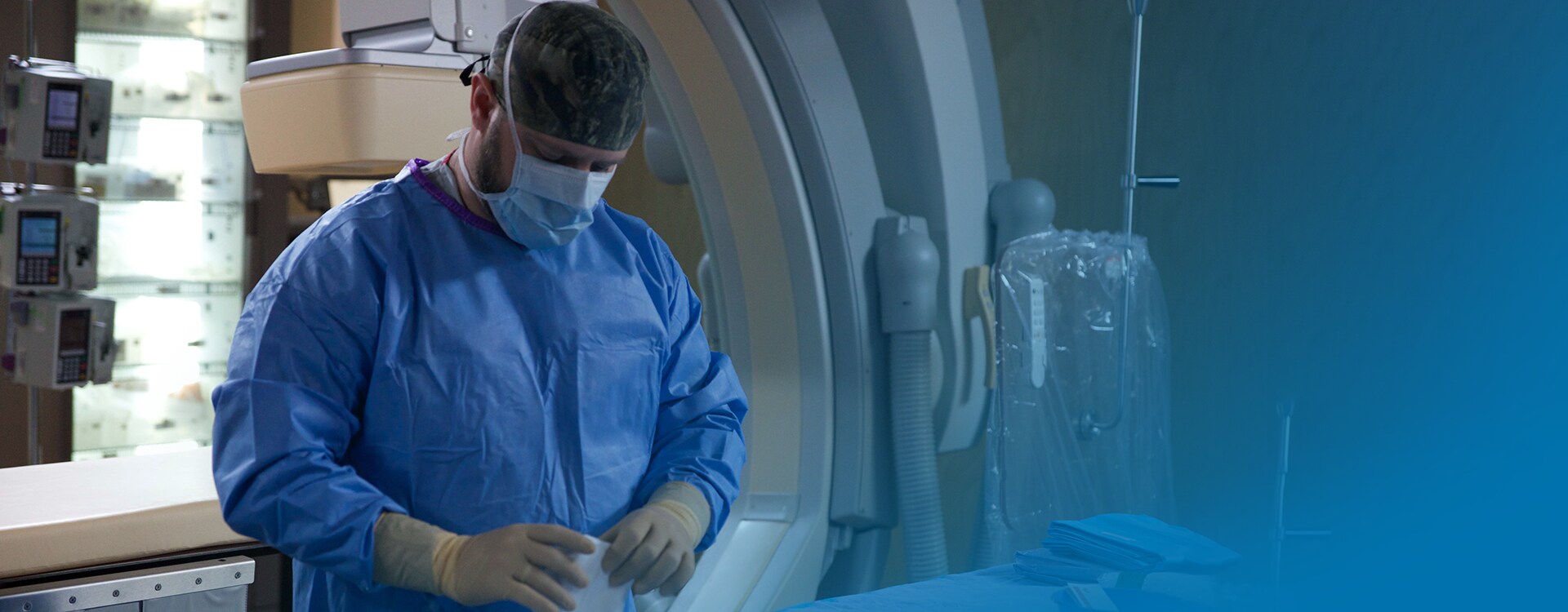Cardiac Catheterization

Catheterization uses thin, flexible tubes called catheters to diagnose and treat certain conditions affecting your heart and its arteries. This procedure is minimally invasive, which means it doesn’t involve a large incision and leads to a faster recovery than surgery.
What to Expect
Before a procedure in Southern Ohio Medical Center’s cath lab, you’ll receive an anesthetic to prevent pain and a sedative to make you relax. Your procedure will be performed by an interventional cardiologist—a heart doctor who specializes in minimally invasive techniques.
Your cardiologist will start by inserting a catheter into either the:
- Radial artery in your wrist, an approach that shortens recovery time and has the lowest risk of complications (side effects)
- Femoral artery in your upper thigh, an approach that requires you to lie still for a few hours afterward
SOMC cardiologists use the radial approach 90% of the time to improve your experience.
Examining Your Heart
Guided by imaging technology, your cardiologist will move the catheter up to either the:
- Left side of the heart to examine the valves, blood flow, left ventricle (upper chamber) and the aorta (your body’s largest artery)
- Right side of the heart to measure pressure in the right ventricle (upper chamber) and the pulmonary (lung) artery
You’ll receive an injection of a special dye that makes your heart and its arteries show up in real time on a monitor in the cath lab. Your cardiologist may diagnose a cardiovascular condition based on what’s seen during the procedure.
Treating Clogged Heart Arteries
If the diagnostic exam shows you have coronary artery disease (blocked heart arteries), SOMC cardiologists may be able to treat the condition right away. They use a technique called percutaneous coronary intervention (PCI), also known as angioplasty and stenting. It can:
- Relieve angina (chest pain), fatigue and shortness of breath
- Stop a heart attack, potentially saving your life during a medical emergency
Your cardiologist inserts a tiny balloon into a blocked artery and inflates it at the site of the blockage, pushing plaque against the wall of the blood vessel. This technique widens the artery, improving blood flow to your heart. The cardiologist usually also places a tiny metal-mesh tube called a stent to keep the artery open.
PCI is less invasive, safer and more affordable than heart bypass surgery, another effective treatment for coronary artery disease.
Rehabilitation for Your Heart
After PCI, you’ll begin cardiac rehabilitation to safely start rebuilding energy and endurance while you’re still in the hospital. Once you return home, you’ll continue making progress by joining a 12-week outpatient program that combines exercise and education. Look forward to meeting your peers and learning how to take care of your heart in this supportive program—the only one of its kind in Scioto County.